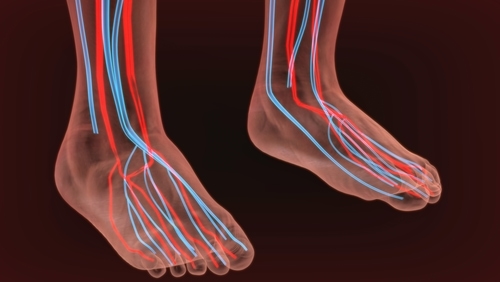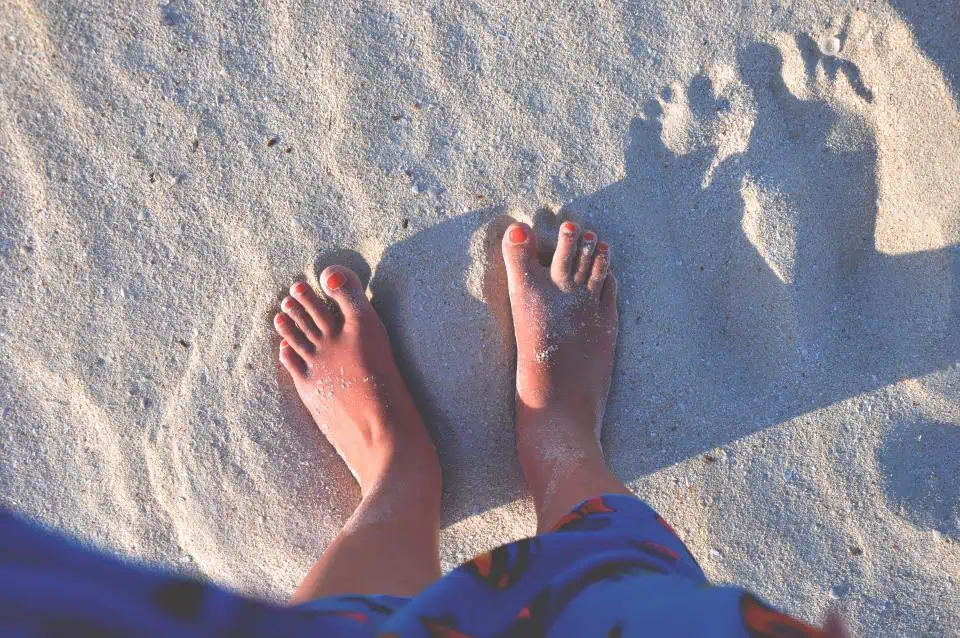Leg cramps are extremely frustrating. Many of you have been woken up suddenly by the feeling of a giant knot forming in your calf muscle and you try to stretch it before it has a chance to get knotted up. It’s discouraging, exhausting, and often painful, but now there are new ways to treat leg cramps!
Many of you live with these nightly leg cramps. These more serious cramps are even more frustrating in terms of their frequency and ability to affect your sleep. You may even need to get up and walk around to relieve the symptoms, or perhaps you’ve tried other kinds of remedies: you may have been told you need more calcium, more potassium, and more magnesium. Maybe you’ve heard, “It’s your circulation,” and some of you may resort to drugs such as muscle relaxants, Lyrica, and Neurontin that are used for neuropathy. You may even take tranquilizers to get to sleep!
Four years ago another solution to this problem was found. At Anderson Podiatry Center (and a select few other centers around the country) we do nerve decompression procedures in the foot and lower leg to release pressure on tight nerve tunnels that are damaging your nerves, thus relieving symptoms. Four years ago a fifth tunnel compression that can also create damage to nerves was found. This tunnel, when compressed, can be the cause the severe leg cramps so many people suffer from.
It’s called the soleal sling tunnel and it resides deep inside your larger calf muscle. A fibrous band that lays close to the tunnel can cause pressure against the main nerve that goes to the bottom of your foot. When that tight band is released surgically, many patients get relief from severe leg cramps.
Cramping may not be the only symptom for these patients. Many will have numbness, burning, tingling, and weakness associated with damage to the nerve. A 20 minute procedure can have patients walking the next day, and many find symptom relief within days. Though not for everyone it is an exciting new treatment option now available for many that suffer from this aggravating and even debilitating problem.
Some of you may be at your wits end with the fatigue and stress that you experience when these severe chronic night-time cramps never seem to go away. Don’t forget the drugs you may be taking are not fixing it, although they may help. Please take into account the nerve tunnel procedure for soleal sling next time you’re considering your next step to get rid of the cramps, and get your sleep and life back! 

 hy. I had six surgeries with only a five-minute break between surgeries to celebrate Rhonda’s birthday (Rhonda has been our recovery room nurse for 10 years and she is absolutely the best! Patients and staff love her.)
hy. I had six surgeries with only a five-minute break between surgeries to celebrate Rhonda’s birthday (Rhonda has been our recovery room nurse for 10 years and she is absolutely the best! Patients and staff love her.)














![photo-1425009294879-3f15dd0b4ed5[1]](https://websitetest8.striveenterprisetest.com/wp-content/uploads/2016/05/photo-1425009294879-3f15dd0b4ed51-200x300.jpg)